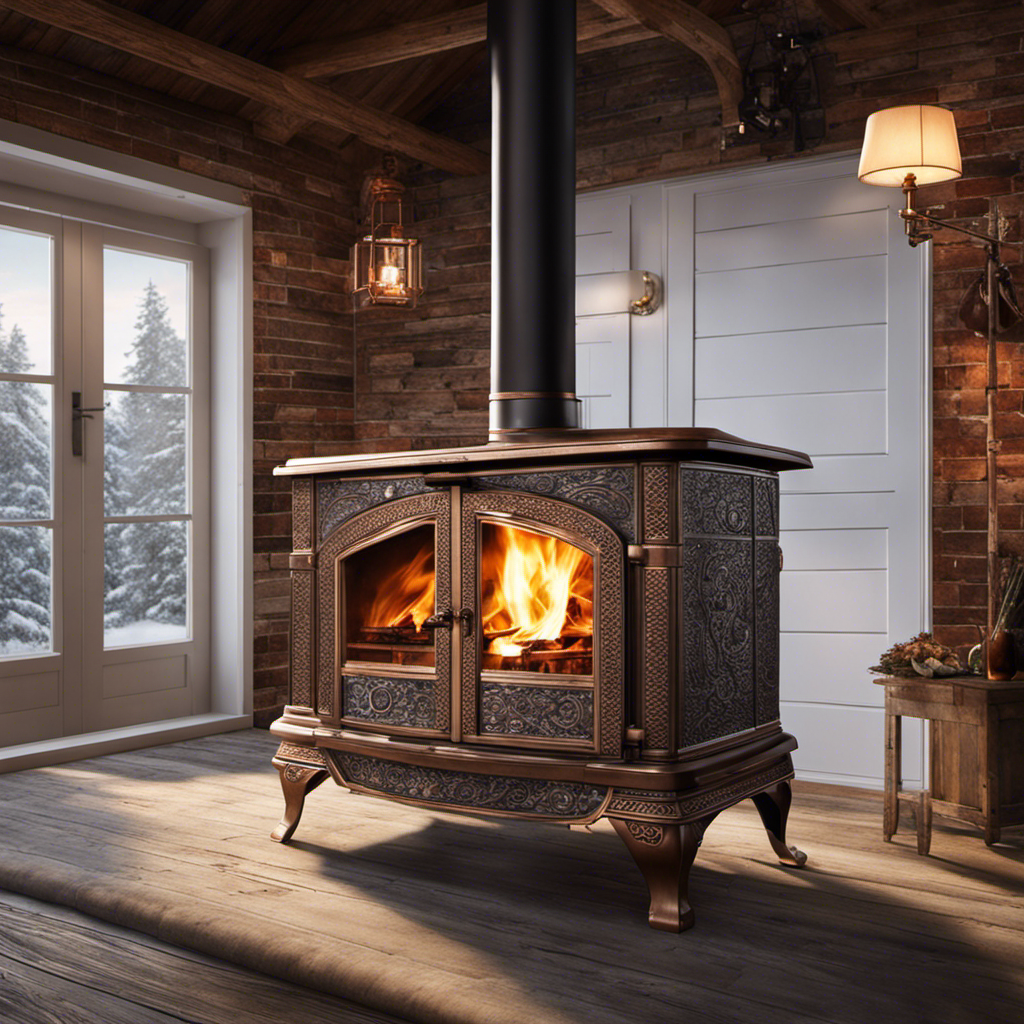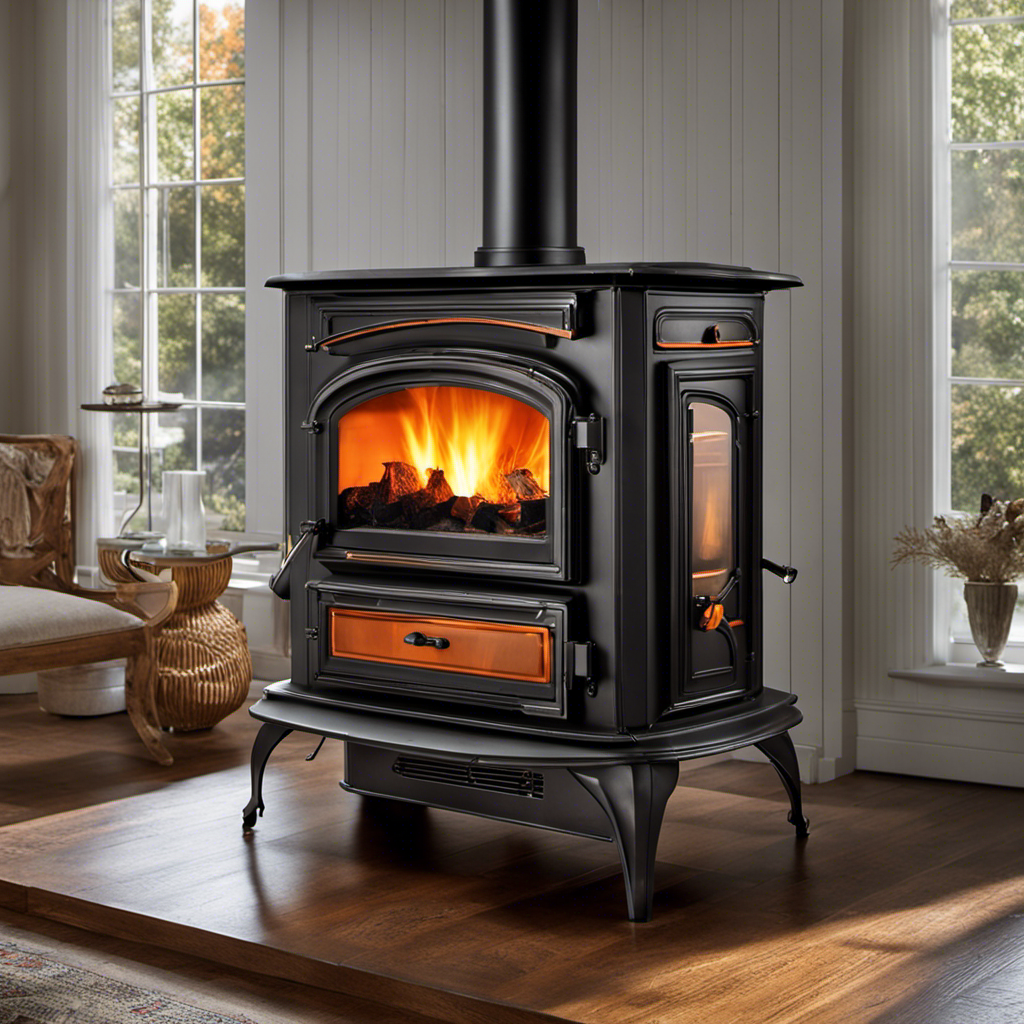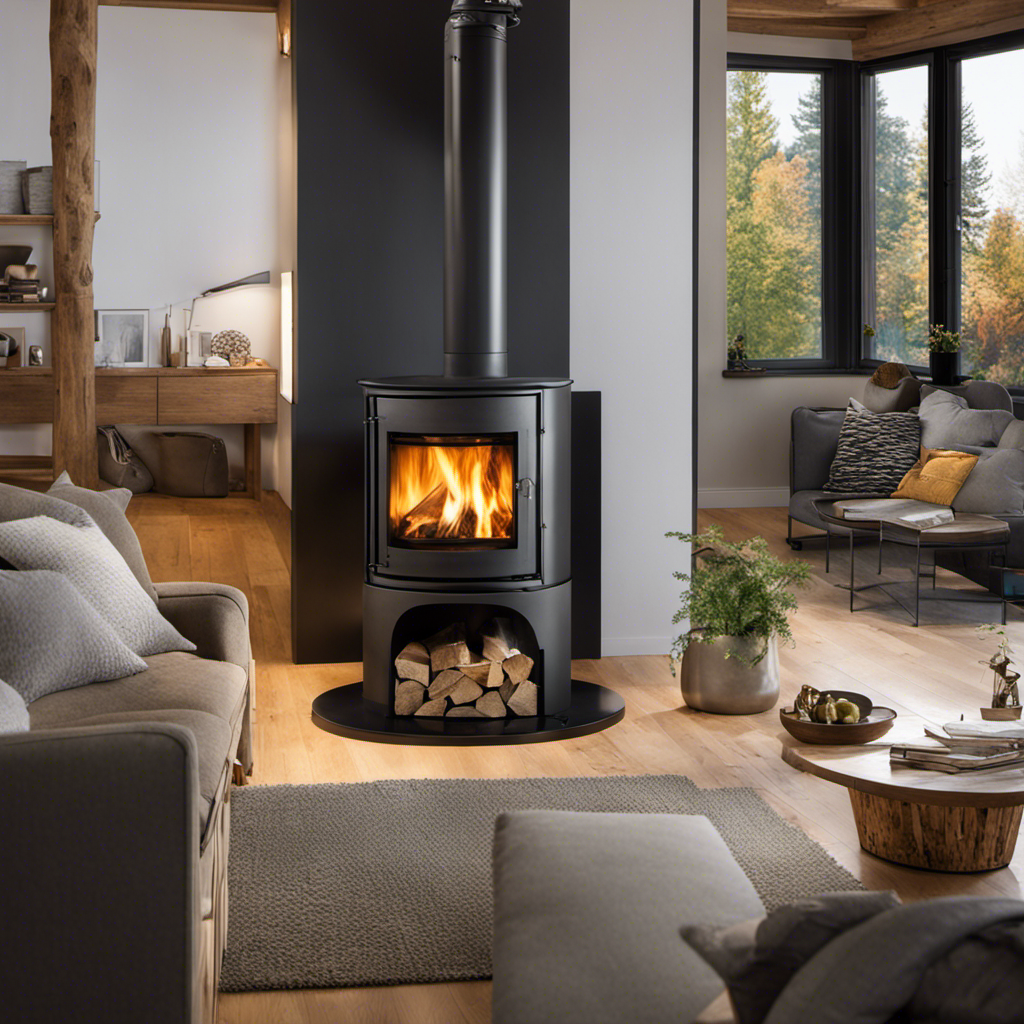Motivated by my love for all things cozy and traditional, I immersed myself in the realm of Russian wood stoves. These impressive structures are not just for heating; they represent the essence of Russian traditions and cultural heritage.
In this article, we’ll explore the history, design, and benefits of using a Russian wood stove. So, grab a cup of tea and join me on this journey to discover the magic of these timeless heating devices.
Key Takeaways
- Russian wood stoves, also known as ‘pechi,’ originated in the 15th century and quickly became an integral part of Russian culture.
- They are meticulously crafted with clay or brick materials for excellent heat retention and feature multiple layers to trap and radiate heat.
- Russian wood stoves efficiently burn wood for heating and cooking, with maximum heat transfer and even heat distribution.
- They save energy and money, reduce the need for other heating sources, and are a greener option with optimized combustion and reduced emissions.
History of Russian Wood Stoves
I’ve always been fascinated by the history of Russian wood stoves. These unique heating devices have a rich and intriguing past, with origins dating back centuries.
Russian wood stoves, also known as ‘pechi,’ were first developed in the 15th century and quickly became an integral part of Russian culture. These stoves weren’t only used for heating but also for cooking and even drying clothes.
The design of Russian wood stoves is characterized by a large brick structure with a chimney, allowing for efficient heating and smoke ventilation. The cultural significance of these stoves can’t be overstated. They played a central role in Russian households, providing warmth, sustenance, and a gathering place for families.
Today, Russian wood stoves continue to be cherished for their historical and cultural value, serving as a reminder of the country’s rich heritage.
Design and Construction of Russian Wood Stoves
I’m fascinated by the design and construction of Russian wood stoves, and I can’t wait to learn more about how these unique heating devices are built and assembled.
When it comes to the design considerations, Russian wood stoves are meticulously crafted to efficiently heat a space while minimizing the amount of wood needed. The materials used in their construction are typically clay or brick, which have excellent heat retention properties. The stoves are built with multiple layers to trap and radiate heat, with intricate patterns and designs on the exterior adding a touch of beauty. The use of natural and locally sourced materials not only enhances the stoves’ efficiency but also makes them environmentally friendly.
Now, let’s delve into how Russian wood stoves work and the science behind their heating capabilities.
How Russian Wood Stoves Work
From my research, it seems that Russian wood stoves work by efficiently burning wood and using the heat to warm up the surrounding space. These stoves have been used for centuries in Russia and are known for their high efficiency and ability to provide consistent heat.
The design of a Russian wood stove allows for maximum heat transfer, ensuring that a small amount of wood can generate a significant amount of heat. This efficiency is especially useful in cold climates where heating is a necessity.
Additionally, Russian wood stoves are often used for traditional Russian cooking methods, such as baking bread or slow-cooking stews. The stoves’ design and insulation allow for even heat distribution, making them ideal for cooking.
Overall, Russian wood stoves are a practical and efficient solution for both heating and cooking purposes.
Benefits of Using a Russian Wood Stove
Using a Russian wood stove can save energy and money by efficiently heating a space and reducing the need for other heating sources. These stoves are designed with an innovative technology that allows for better fuel combustion, resulting in cost savings and environmental friendliness.
The key to the efficiency of a Russian wood stove lies in its unique design, which includes a long, winding flue that maximizes heat transfer. This means that more heat is absorbed by the stove and dispersed into the room, minimizing heat loss.
Additionally, the combustion process in these stoves is optimized, resulting in less smoke and emissions, making them a greener heating option.
Tips for Maintaining a Russian Wood Stove
Someone should regularly clean and inspect their Russian wood stove to ensure it operates efficiently and safely. Maintaining efficiency is key to getting the most out of your stove and keeping your energy bills low.
One common issue that can affect efficiency is a buildup of creosote in the chimney. This can restrict airflow and reduce heat output. To troubleshoot this, you can regularly clean the chimney using a chimney brush.
Another common issue is a damaged or worn-out gasket on the stove door. This can cause air leaks and reduce the stove’s efficiency. To fix this, you can replace the gasket with a new one.
Frequently Asked Questions
Are Russian Wood Stoves Only Used for Heating, or Can They Also Be Used for Cooking?
Russian wood stoves are versatile, serving both as heating and cooking devices. Unlike other traditional cooking methods, they efficiently utilize wood as fuel, providing warmth and allowing delicious meals to be prepared simultaneously.
Is It Safe to Use a Russian Wood Stove Indoors?
Using a Russian wood stove indoors can be dangerous due to the environmental impact. The fumes and smoke can harm air quality and pose health risks. There are safer options for indoor heating available.
How Much Wood Does a Russian Wood Stove Typically Consume per Day?
A Russian wood stove typically consumes a moderate amount of wood per day, depending on its efficiency and maintenance. It’s important to properly maintain the stove to ensure it operates efficiently and to minimize wood consumption.
Can a Russian Wood Stove Be Used in Areas With Strict Air Pollution Regulations?
Using a Russian wood stove for heating in areas with strict air pollution regulations can be challenging. While it provides warmth and a cozy atmosphere, it may emit smoke and particulate matter, which can contribute to indoor air pollution.
Are There Any Specific Safety Precautions to Take When Using a Russian Wood Stove?
When using a Russian wood stove, it’s important to take specific safety precautions. Ensure proper ventilation to prevent carbon monoxide buildup, use fire-resistant materials around the stove, and keep flammable objects away.
Are Alpiner Wood Stoves Similar to Russian Wood Stoves in Terms of Starting Them?
Are Alpiner wood stoves similar to Russian wood stoves in terms of starting them? When it comes to starting an alpine wood stove, there may be some similarities with Russian wood stoves in terms of the basic process. However, it’s important to note that specific methods and techniques might vary based on the design and features of the stove.
Conclusion
In conclusion, Russian wood stoves have a rich history and unique design that sets them apart from other heating systems. Their efficient combustion process and use of radiant heat provide numerous benefits, such as reduced fuel consumption and a cozy, comfortable atmosphere.
As the saying goes, ‘Where there’s smoke, there’s fire,’ and with a Russian wood stove, you can enjoy the warmth and ambiance of a traditional heating method while minimizing environmental impact.











